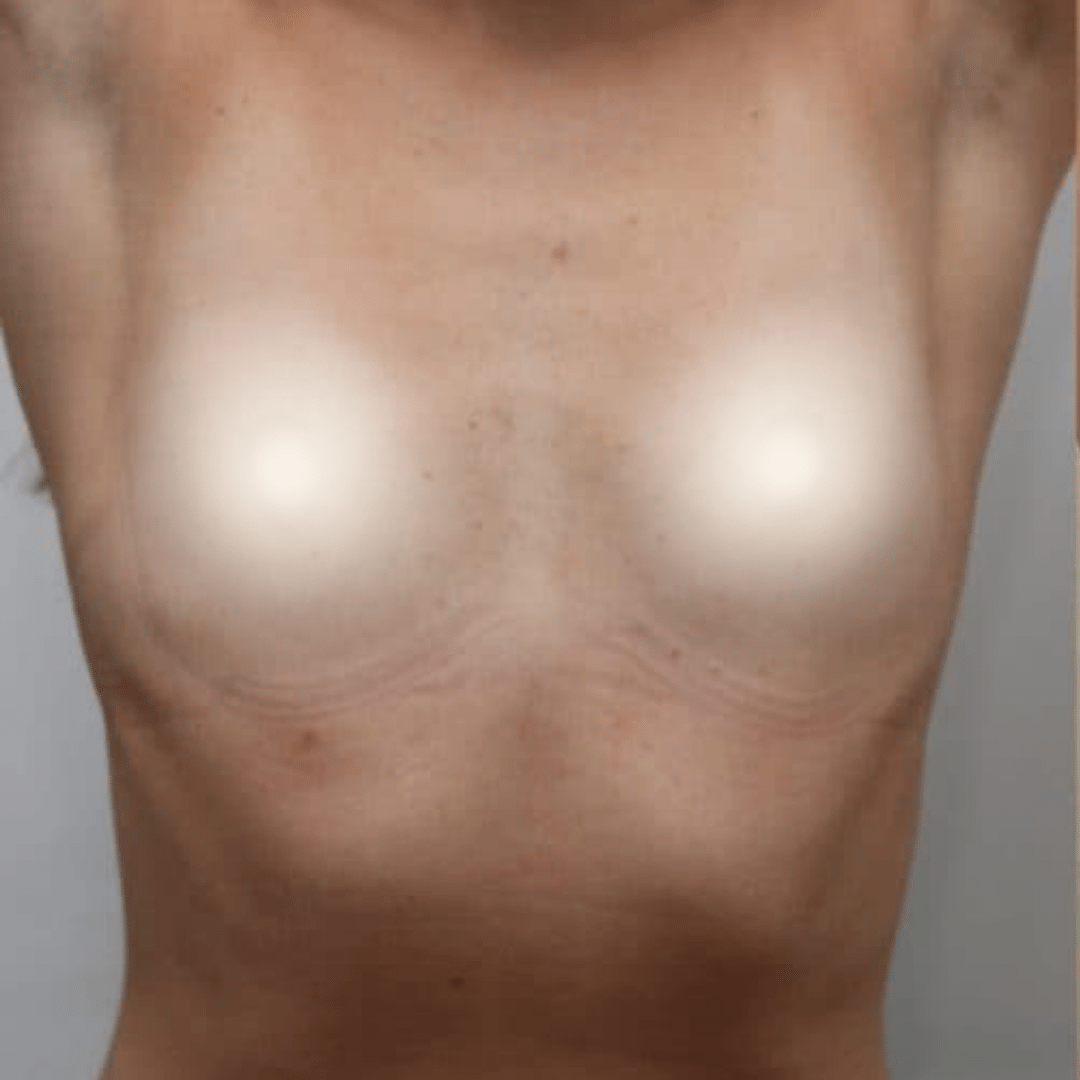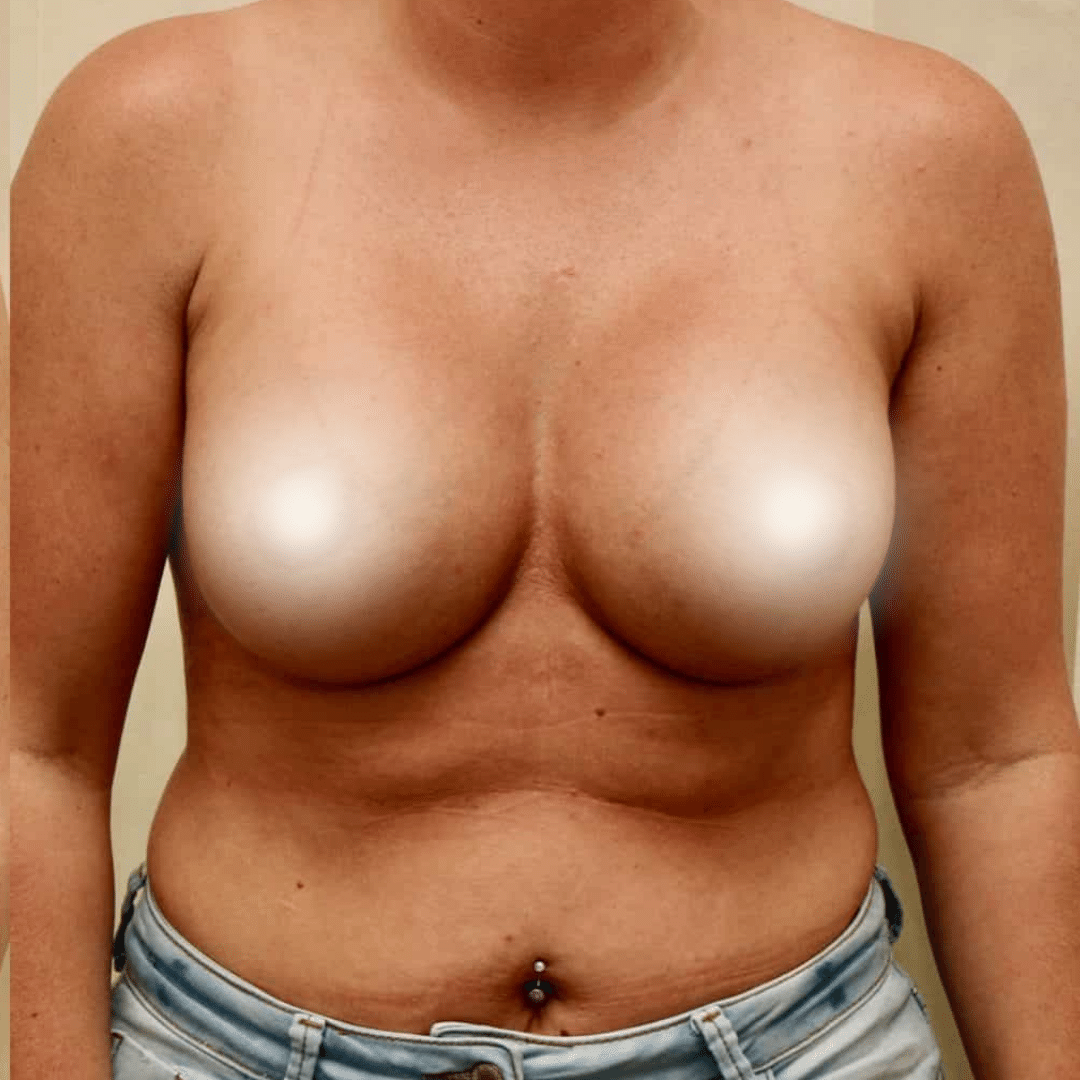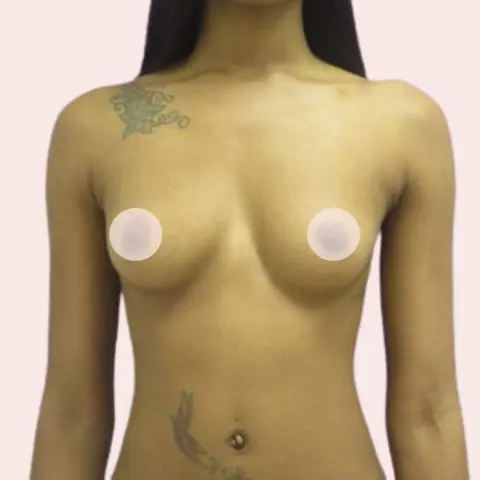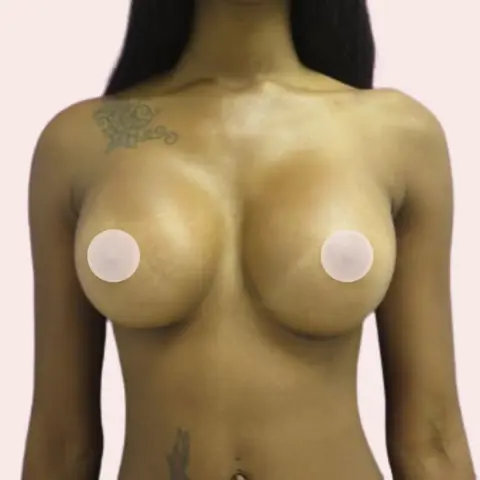

Breast Augmentation, often referred to as a "boob job," is a surgical procedure aimed at enhancing the size, shape, or fullness of the breasts. The procedure typically involves the placement of silicone, saline, or other composite breast implants under the chest muscles or breast tissue. Implants last from 7 to 12 years on average.
The primary reasons individuals opt for breast augmentation include increasing breast size, achieving a more symmetrical breast appearance, restoring breast volume post-pregnancy or weight loss, or boosting self-confidence and self-image. Whatever the motivation, breast augmentation offers a way to achieve a desired breast contour tailored to each patient's unique needs and aesthetic goals.
Pros of Breast Augmentation:
- Enhanced Appearance: Breast augmentation can increase the size and fullness of the breasts, leading to a more proportionate and aesthetically pleasing body contour.
- Boosted Self-confidence: Many patients report a significant boost in self-esteem and confidence following the procedure.
- Restoration after Life Events: It can restore breast volume lost due to pregnancy, breastfeeding, or significant weight loss.
- Correction of Asymmetry: Breast augmentation can correct noticeable asymmetry between the breasts.
- Variety of Choices: Patients can choose the type, size, and shape of implants, allowing for a tailored aesthetic outcome.
Cons of Breast Augmentation:
- Surgical Risks: As with any surgery, there's a risk of complications such as infection, bleeding, or adverse reactions to anesthesia.
- Maintenance: Implants may not last a lifetime. Future surgery might be needed to replace or remove the implants.
- Scarring: While surgical techniques aim to minimize scars, some scarring is inevitable.
- Potential Complications: There's a risk of complications like capsular contracture (scar tissue forming around the implant), rupture, or leakage of the implant.
- Cost: The procedure can be expensive, and ongoing maintenance or potential corrective surgeries can add to the cost.
- Altered Sensation: Some patients may experience changes in nipple or breast sensation after the surgery, which can be temporary or permanent.
There are primarily two types of implants used in breast augmentation, each with its own variations in terms of material, shape, and texture. Here's an overview:
1. Silicone Gel Implants:
- Composition: These implants are filled with a thick, sticky silicone gel that closely mimics the feel of human fat, offering a more natural texture than saline.
- Shape: They can be round or anatomically shaped, often referred to as "teardrop" implants.
- Texture: The outer shell can be either smooth or textured.
- Note: Patients choosing silicone implants are advised to have regular MRI checks to detect potential silent ruptures.
2. Saline Implants:
- Composition: Saline implants have a silicone outer shell but are filled with sterile salt water (saline). If they rupture, the body safely absorbs the saline.
- Shape: Typically round.
- Texture: The outer shell can be either smooth or textured.
- Variation: Some saline implants allow for adjustments in saline volume after placement, providing some flexibility in size.
3. Other Options:
- Composite Implants: These implants may be filled with alternative materials like soy oil or polypropylene string. However, they are less common and might not be available everywhere.
- Fat Transfer: In some cases, patients opt for a "natural" breast augmentation, where fat is harvested from another part of their body, purified, and then injected into the breasts. While this doesn't involve the use of traditional implants, it offers a more natural result with the added benefit of body contouring from the fat harvesting site.
When choosing the type of implant, it's essential to consider individual goals, body type, and the recommendations of a trusted plastic surgeon. Each type of implant offers its own set of advantages and considerations, so a thorough consultation is crucial.
Determining candidacy for breast augmentation is best done in consultation with a board-certified plastic surgeon. However, generally speaking, a good candidate for breast augmentation may:
- Desire Larger Breasts: You might feel that your breasts are too small for your body contour or wish to achieve a more balanced figure.
- Asymmetry Correction: If one breast is noticeably larger than the other, augmentation can help balance them.
- Recovery from Life Changes: You may want to restore breast volume and shape lost due to pregnancy, breastfeeding, or significant weight loss.
- Have Realistic Expectations: It's crucial to understand what breast augmentation can and cannot achieve.
- Be Physically Healthy: Ideal candidates should be in good general health and not have any active infections or illnesses.
- Be Mentally Prepared: Understanding the risks, benefits, and post-operative care is vital. Emotional readiness for the change and potential challenges is also key.
- Non-smoker: Smoking can interfere with the healing process, so many surgeons recommend quitting before and after the surgery.
- No History of Certain Health Issues: Conditions that could compromise healing or increase the risk of complications, such as uncontrolled diabetes or certain autoimmune diseases, may affect candidacy.
- Age Consideration: For silicone implants, the FDA recommends that patients be at least 22 years old. For saline implants, patients should be at least 18.
- Not Pregnant or Nursing: It's recommended to wait until you're done having children and breastfeeding before considering breast augmentation.
If you're considering breast augmentation, a comprehensive evaluation by a qualified surgeon will help ensure that it's the right decision for your individual needs and circumstances.
Breast augmentation, also known as augmentation mammoplasty, is a surgical procedure designed to increase breast size using implants or fat transfer. The specific techniques and steps may vary depending on the surgeon's preferences, the type of implant chosen, and the patient's anatomy. Here's a general overview of the procedure and its timeframe:
1. Consultation: Prior to the procedure, patients will have a consultation with their surgeon to discuss goals, choose the type of implant, and plan the surgical approach.
2. Anesthesia: On the day of surgery, the procedure typically begins with the administration of anesthesia. General anesthesia is most commonly used, though local anesthesia combined with sedation can be an option for some patients.
3. Incisions: The surgeon will make incisions in one of the following areas, depending on the agreed-upon approach:
- Inframammary (in the fold under the breast)
- Periareolar (around the nipple)
- Transaxillary (in the armpit)
- Transumbilical (belly button) - less common
4. Inserting and Positioning the Implant: Through the incision, the surgeon creates a pocket either:
- Submuscular/beneath the pectoral muscle
- Subglandular/directly behind the breast tissue but over the pectoral muscle
- The chosen implant is then inserted and positioned within this pocket.
5. Closing the Incisions: Once the implants are appropriately placed, the surgeon closes the incisions with sutures, skin adhesive, or surgical tape.
6. Recovery: After surgery, the patient is moved to a recovery area where they're monitored as the anesthesia wears off. Typically, breast augmentation is an outpatient procedure, meaning patients can go home the same day.
Timeframe:
- Surgery Duration: The actual surgery typically lasts between one to two hours.
- Initial Recovery: Most patients can return home the same day, but will need someone to drive them. It's recommended to take it easy for several days and avoid strenuous activity.
- Follow-up: A post-operative checkup is usually scheduled within the first week to assess healing and address any concerns.
- Full Recovery: While many patients feel better within a week and can return to non-strenuous jobs, complete healing and settling of the implants might take several weeks to months. Regular follow-ups might be scheduled over the next few months to monitor the progress.
Patients should always adhere to their surgeon's specific post-operative instructions and guidelines for the best results and recovery.
Recovery after breast augmentation varies for each individual, but there are common experiences and guidelines that most patients can anticipate:
- Immediate Post-Op: After the surgery, you'll be placed in a recovery area where the medical team will monitor you as the anesthesia subsides. You might feel groggy or drowsy. Once you're stable and awake, you can usually go home the same day, but you'll need someone to drive you.
- Discomfort: Mild to moderate pain and discomfort are expected initially. This can be managed with prescribed pain medications. You may also experience tightness in the chest area as the skin adjusts to the new breast size.
- Support Garments: You'll likely be required to wear a surgical bra or compression garment to support the breasts and minimize swelling. This also helps in shaping the breasts during the healing process.
- Swelling and Bruising: It's common to have swelling and bruising post-surgery. This usually peaks a few days after the procedure and gradually subsides over the next few weeks.
- Activity Limitations: Heavy lifting and strenuous exercises should be avoided for at least 4-6 weeks or until the surgeon gives the green light. However, light activities and walking can usually be resumed within a few days.
- Incision Care: You'll be given instructions on how to care for your incisions, including cleaning and applying any ointments if necessary. It's crucial to avoid submerging the incisions in water (like in a bathtub or pool) for the initial weeks.
- Follow-Up Appointments: You'll have scheduled check-ups with your surgeon to monitor your healing progress. These visits are essential to ensure everything is healing as it should and to address any concerns.
- Scarring: Incisions will result in scars, but their appearance usually improves over time. Following your surgeon's care instructions can help minimize scarring.
- Sensation Changes: Some patients experience changes in nipple and breast sensation after the surgery. This can be an increase or decrease in sensitivity. While this is often temporary, it can be permanent for some.
- Settling of Implants: Over time, your implants will "settle" into a more natural position. This process, known as "drop and fluff," can take a few weeks to months.
- Long-Term Care: While the initial recovery period might last several weeks, the breasts will continue to change and settle for up to a year. It's essential to follow all post-operative guidelines during this time and maintain regular follow-ups with your surgeon.
Caring for your breasts post-breast augmentation is crucial for optimal healing, minimized complications, and achieving the best results. Here's a general guide on post-operative breast care:
- Support: Wear the surgical bra or a compression garment provided by your surgeon. This offers support, reduces swelling, and helps in shaping the breasts during recovery. After a certain period, your surgeon may advise you to switch to a soft, wireless bra.
- Incision Care: Keep the incision site clean and dry. You may be given specific instructions on how to gently clean the area and apply ointments or creams to aid healing and reduce the risk of infection. Ensure that you avoid submerging the incision in water until it's fully healed.
- Avoid Strenuous Activities: Refrain from heavy lifting, vigorous exercises, or any activities that strain the chest muscles for the time recommended by your surgeon, typically 4-6 weeks. Light activities, like walking, can be resumed relatively soon to promote blood circulation.
- Sleeping Position: Sleep on your back, propped up with pillows initially, to keep pressure off your breasts and reduce swelling. Avoid sleeping on your stomach or sides until your surgeon advises it's safe.
- Hydration and Nutrition: Drink plenty of water and eat a balanced diet. Proper nutrition can facilitate healing. Some surgeons may also recommend specific supplements to aid recovery.
- Monitor for Complications: Be vigilant for signs of complications, such as excessive swelling, redness, warmth, or discharge from the incision site, severe pain, or fever. Contact your surgeon immediately if you notice any of these symptoms.
- Massage: Some surgeons recommend gentle breast massages to help implants settle and reduce the risk of capsular contracture. However, this isn't always the case, so only do this if your surgeon provides guidance.
- Avoid Smoking: Smoking restricts blood flow and can significantly delay healing. If you're a smoker, it's essential to avoid smoking for several weeks before and after the surgery.
- Avoid Direct Sunlight: Protect your incisions from direct sunlight, as it can darken scars. If you're outside, use sunscreen or protective clothing.
- Regular Check-Ups: Attend all scheduled post-operative appointments with your surgeon. These check-ups allow the surgeon to monitor your healing and address any concerns or questions you might have.
- Long-Term Care: Once healed, continue to conduct regular self-breast exams and attend routine mammograms, if applicable. Inform the mammogram technician about your implants so they can adjust their technique.
Always follow the specific post-operative instructions provided by your surgeon, as recommendations can vary based on the individual procedure and patient needs.
Breast Augmentation, like other medical procedures, can have a wide range of costs based on various factors. Here's a brief overview, keeping the focus on Turkey and its comparative advantage, followed by a simple price comparison:
Turkey has emerged as a leading destination for medical tourism, especially for aesthetic surgeries like breast augmentation. The main reasons for its popularity include state-of-the-art clinics, internationally trained and accredited surgeons, and cost-effective medical services. The low operational costs in Turkey, combined with a competitive market and high standards of care, mean that patients can receive treatments at a fraction of the cost found in Western Europe and the USA without compromising on quality.
Western Europe: In countries like the UK, France, or Germany, the cost of breast augmentation can vary but typically ranges from €5,000 to €10,000, depending on the clinic, surgeon's expertise, and the type and brand of implants used.
USA: In the United States, the procedure generally costs between $5,000 to $10,000. However, when you factor in associated fees like hospital charges, anesthesia, and post-operative care, the price can go even higher.
Turkey: In Turkey, breast augmentation procedures are available at considerably lower prices. Typically, costs range from €2,500 to €4,500, which usually includes consultation fees, the surgery itself, post-operative care, and sometimes even accommodation. The inclusive nature of many Turkish medical packages, combined with the nation's rich cultural experiences, also gives patients the opportunity to recover in a vacation-like setting.
While the prices can be attractive, it's vital for patients to ensure that they select reputable clinics and surgeons to ensure safety and the best possible results. Always prioritize quality and credentials over cost alone.
Choosing the right medical tourism agency and clinic is as crucial as the procedure itself. Here's why Elara Medical Tourism stands out for your Breast Augmentation procedure in Turkey:
1. Renowned Expertise: Elara Medical Tourism partners with Turkey's top-tier clinics and board-certified surgeons. With a track record of excellence, our associated surgeons have undergone extensive training both domestically and internationally, ensuring you receive world-class care.
2. Comprehensive Care: From your initial inquiry to post-operative check-ups, Elara offers an end-to-end service. We understand that traveling abroad for a medical procedure can be daunting. That's why we provide dedicated assistance throughout your journey, including consultations, travel arrangements, and accommodation bookings.
3. Affordable without Compromising Quality: Elara's competitive packages ensure affordability without skimping on the quality of service or results. Our comprehensive packages often include the surgery, post-operative care, accommodation, and sometimes even leisure activities, ensuring a holistic experience.
4. Cultural and Recuperative Experience: Turkey is not just a medical destination but also a historical and cultural haven. With Elara, patients get the chance to recuperate in serene settings, with the option to explore some of Turkey's world-famous landmarks, making the recovery process more pleasant.
5. Patient-Centric Approach: At Elara, patients are not just clients; they are part of our community. We prioritize your safety, comfort, and satisfaction, tailoring our services to meet your unique needs and preferences.
6. Transparent Communication: With Elara, there are no hidden surprises. We maintain transparency in all our dealings, ensuring patients are well-informed about every aspect of their medical journey, from costs to recovery timelines.
In essence, choosing Elara Medical Tourism for your Breast Augmentation in Turkey means entrusting your care to a dedicated team that combines medical excellence with unparalleled patient support. Experience the best of medical expertise and Turkish hospitality with Elara.


Perfecting Proportions: A Closer Look at Breast Augmentation Procedures


Curves Redefined: Navigating the World of Breast Augmentation


The Science of Elegance: A Closer Look at Breast Implants


A 30-year-old woman with a succesful Breast Augmentation surgery




